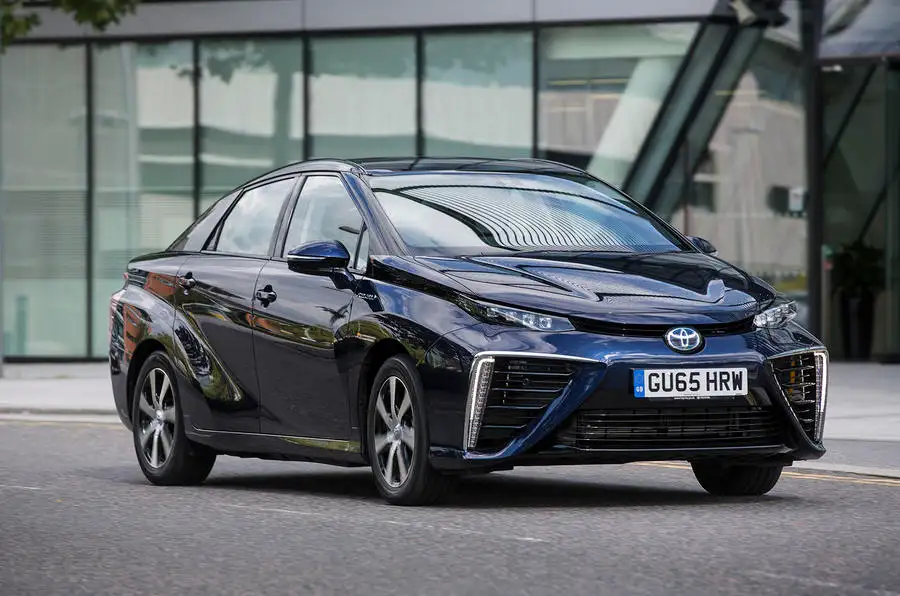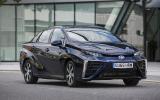What is it?
The Toyota Mirai is among the first hydrogen-fuelled electric cars to reach series production and be offered to customers as a regular private purchase – as opposed to a short-term lease deal, where customers are obliged to hand the car back, as has mostly been the case up to now.
When UK deliveries begin next month, the distinctively styled saloon will be priced at £66,000, or some £32,605 more than the firm’s £33,395 Prius Plug-In Hybrid.
This appears steep, but the Mirai is among the most advanced road cars on sale right now. Prospective customers can also look forward to a £5000 government-backed subsidy as well as a comprehensive 24-hour, seven-day-a week concierge service and an extensive five-year/100,000-mile warranty that includes roadside assistance.
Toyota is also offering the Mirai on a £750-per-month lease scheme over four years and 60,000 miles, which begins to make the Mirai an interesting proposition, especially for those seeking a city charge-buster who live near one of the UK’s nine hydrogen fuelling stations.
Don’t expect Prius levels of market penetration, though. With production limited to just 700 cars this year, Toyota says initial volumes will be restricted to just 12 in the UK, followed by a further 18 next year.
The starting point for the Mirai is the Prius Plus. The two cars share the same high-strength steel platform, MacPherson strut front and double wishbone rear suspension and 2780mm wheelbase.
With exaggerated exterior styling elements, including two large air ducts that dominate the front end, it certainly looks distinctive. It’s fairly big, too, at 4890mm long, 1815mm wide and 1535mm high. Without the need to package hot exhausts within the underbody, Toyota has provided the Mirai with a flat undertray. But with a drag co-efficient of just 0.29, its aerodynamic efficiency lags behind that of the competition.
The Mirai uses a single electric motor delivering 152bhp and 208lb ft. It is essentially the same unit used in the Lexus 450h and is mounted transversely in the engine bay along with the power control electronics, where it provides drive to the front wheels via a fixed-ratio gearbox.
The fuel cell stack, which uses a combination of oxygen captured from the air and hydrogen to create the electricity used to power the electric motor, is mounted underneath the front seats. Produced in-house at Toyota, it is claimed to possess a specific output of 2.0kW/kg – a 50% improvement in the electrical energy-producing efficiency of Toyota’s initial fuel cell stack revealed in 2008.
Key to the high efficiency is a patented 3D cell design which is claimed to clear waste water away from the surface of the electrode faster than previous cell designs achieved. As such, there is an improved flow of oxygen to the catalyst layer and an increased production of electricity.
The fuel cell stack, which is housed in a titanium case and weighs just 57kg, can operate in temperatures as low as -30deg C. It is also claimed to possess a similar lifespan as a conventional internal combustion engine. Toyota expects it to provide up to 300,000 miles of motoring before it requires overhauling.









































Join the debate
Add your comment
What is it indeed!!!!!
Back to the drawing board
1) A car that looks this ugly should be prohibited by law from ever appearing on public roads. It represents a brazen assault on our senses, an affront to our standards of good taste.
2) Rather disturbing for Toyota must be the fact that Hyundai's fcev technology seems superior in terms of range and general polish, based on the reviews of their respective systems. Not to mention that the ix35 fcev is cheaper, and is already available for purchase by the general public unlike the Mirai. Oh, and it looks a million times better than this sorry mess.
As clever and pioneering as